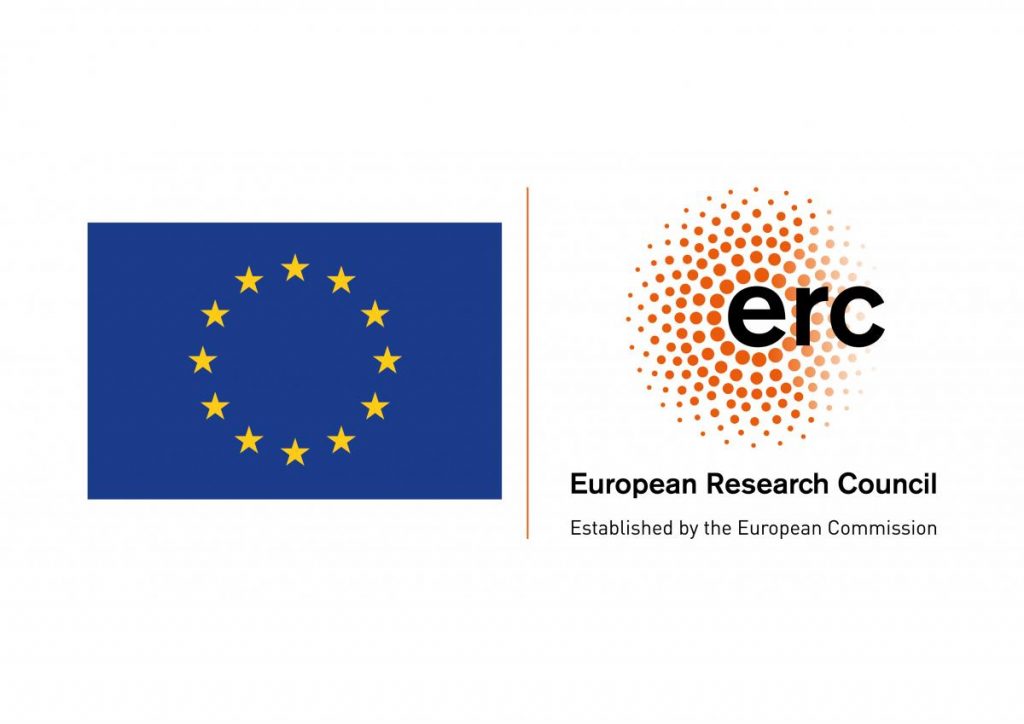
INITIUM: an Innovative Negative Ion TIme projection chamber for Underground dark Matter searches
INITIUM goal is to boost the advancement of gaseous Time Projection Chamber detectors, in particular in the Dark Matter (DM) searches field. This project has received funding from the European Research Council (ERC) under the European Union’s Horizon 2020 research and innovation programme (grant agreement No 818744). Thanks to advances in recent years in Micro Pattern as Detectors (MPGD) for amplification and improved readout techniques, TPCs are in fact nowadays mature detectors to aiming at a ton-scale experiment. INITIUM focuses on the development and operation of the first 1 m3 Negative Ion TPC with Gas Electron Multipliers amplification and optical readout with CMOS-based cameras and PMTs at Laboratori Nazionali del Gran Sasso (LNGS). INITIUM aim is to demonstrate the proof-of-principle, performances and scalability of this approach towards the development of a large scale detector in the context of the international CYGNUS effort, whose goal is to establish a Galactic Directional Recoil Observatory at the ton-scale that can test the DM hypothesis beyond the Neutrino Floor and measure the coherent scattering of neutrinos from the Sun and Supernovae.
Backed by some recent breakthroughs in the field (to which the CYGNUS-RD/CYGNO group significantly contributed), INITIUM main innovative features will be to bring together and optimise in a mannerly fashion the following innovative features:
- 3D tracking readout thanks to the combination of CMOS-based cameras 2D X-Y projection of the secondary scintillation light produced together with the electron avalanche in the GEMs with PMTs for the detection of the GEMs light time profile (dZ)
- The use of MPGD as Gas Electron Multipliers (GEMs) for gas amplification for the possibility of higher gains, also in a negative ion gas environment (see below), and hence lower energy thresholds.
- The use of an He:CF4:SF6 gas mixture at atmospheric pressure for a negative ion drift TPC approach (NITPC)
Negative ion drift is a peculiar modification of conventional TPCs, employed for example by the DRIFT experiment, that involves the addition to the gas of a highly electronegative dopant [1]. In this configuration, primary electrons liberated by the track while ionising the gas are captured at very short distances <10-100 μm by the electronegative molecules, creating negative ions. These anions drift to the anode, where their additional electron is stripped and gives rise to a standard electron avalanche. Thanks to the anions mass being much larger than electrons, their diffusion is reduced to the thermal limit without the need of magnetic fields, achieving a dispersion of ~1 mm/m [1] (to be compared to ~20 mm/m expected for conventional electron drift). This characteristic allows for the use of longer drift distances, combined with improved tracking performances. Recently, a new remarkable feature has been observed in negative ion gas mixtures: the presence of multiple charge carriers in the time signal, with different masses [2]. Since anions mobility depends on the mass, the difference in time of arrival of different anions effectively provides a measurement of the position of the event along the drift direction. Full 3D detector fiducialization can be obtained exploiting this information (i.e. DRIFT), and background-free operation over 1 m3 [3]. Thanks to these two features, NITPC readout planes can image a larger volume than conventional TPC approaches, resulting in lower backgrounds and costs for unit mass.
SF6 has been recently demonstrated to work very well as negative ion gas between 20 and 100 Torr, including the possibility of high gains and fiducialization via minority SF5- charge carriers [4]. Compared to the high vapour pressure, low flash point and low explosive mixture in air of the CS2 employed by DRIFT, SF6 has the substantial advantages of much more safer handling, combined with easier Radon purification and recirculation [5], while at the same time increasing the target Fluorine mass. With the NITEC detector we proved for the first time the feasibility of negative ion operation at nearly atmospheric pressure with He:CF4:SF6 at 360:240:10 Torr with triple thin GEMs and charge pixel readout (Timepix) [6], opening the doors for a realistic development of a NITPC at 1 bar with these gases.
Thanks to these foreseen innovative features, INITIUM will be able to put new remarkable constraints in the low mass WIMP-nucleon scattering parameter space still unexplored to these days, with sensitivity down to ~ 10-42-10-43 cm2 for Spin Independent (SI) and ~ 10-41 for Spin Dependent (SD) coupling in the 1-10 GeV WIMP mass region. During its commissioning in an underground run without neutron shielding and with the addition to the gas of a small 0.5% 3He fraction, INITIUM will provide as a byproduct the first precise simultaneous and directional measurement of fast and thermal environmental neutron flux at LNGS, supplying crucial information for any present and future experiment in this location.
[1] C. J. Martoff et al, NIM A 440 355; T. Ohnuki et al, NIM. A 463
[2] D. P. Snowden-Ifft, Rev. Sci. Instrum. 85 (2014) 013303
[3] J.B.R. Battat et al, Astropart.Phys. 91 (2017) 65-74
[4] N. S. Phan et. al, JINST 12 (2017) no.02, P02012
[5] A. C. Ezeribe et. al, JINST 12 (2017) no.09, P09025
[6] E. Baracchini et. al, JINST 13 (2018) no.04, P04022
